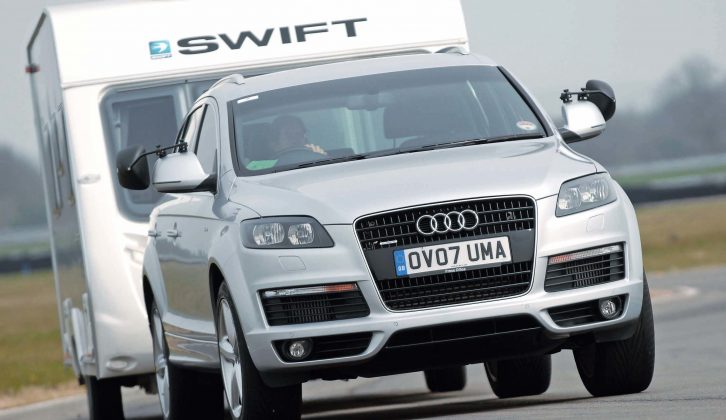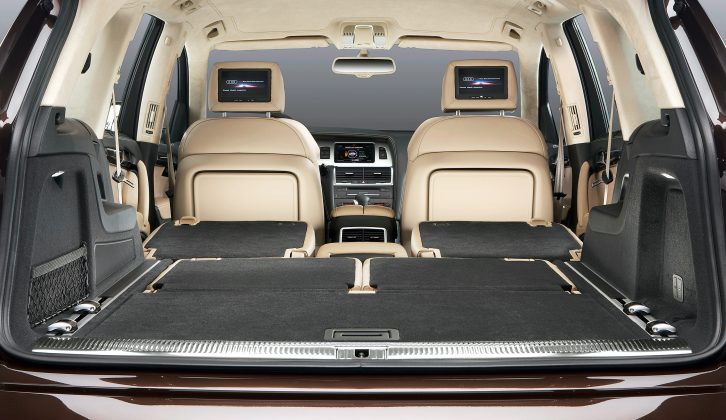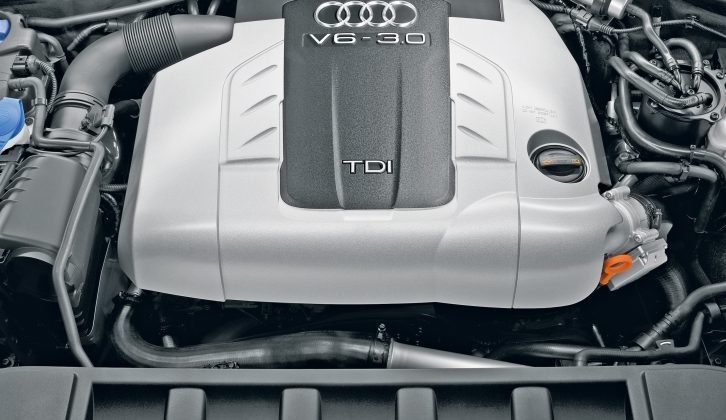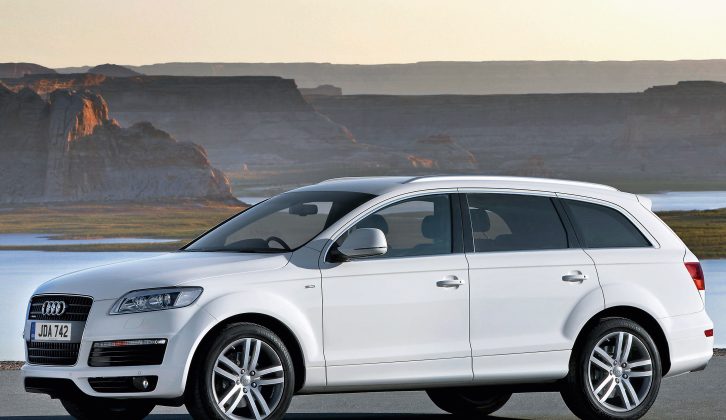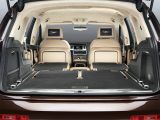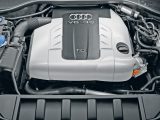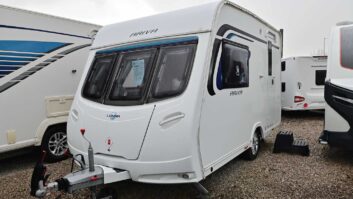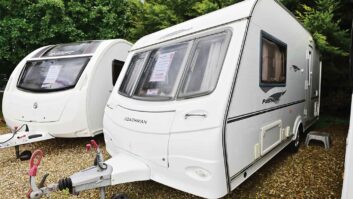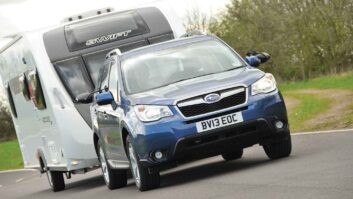Here we’re considering what tow car potential the Audi Q7 has, as well as finding out what to look for if you’re buying these 2006-on cars when used. But a bit of housekeeping first: Audi did list petrol-engined Q7s – a 4.2 V8 at launch, a 3.6 V6 in 2007 and later on a 3.0 V6. However, we’re going to ignore them here because 99% of the Q7s actually sold in the UK had diesel engines, and that’s what you’re going to want for towing.
So that leaves us just one engine to talk about for the Q7’s July 2006 launch: a 3.0 TDI V6 with 229bhp, 368lb ft of torque, a six-speed auto and the promise of an average of 27mpg. In July 2007 this was joined by a 4.2 TDI V8 putting out 321bhp and a whopping 560lb ft of torque, with an agreeable 25mpg. Not to be outdone, the 3.0 TDI’s engine was revised five months later, increasing bhp slightly to 236 and torque quite significantly to 406lb ft, yet also with a small improvement in economy.
Then, in December 2008, Audi added a Q7 that came with the accolade of ‘the world’s most powerful diesel passenger car’. The V12 TDI boasted a twin-turbo 5.9-litre engine pumping out 493bhp and an earth-moving 738lb ft of torque. It could even do 24mpg, though not when accelerating from 0-60mph in 5.5 seconds! Packed with more leather and electronics than a millionaire bachelor’s flat, it came with a £94,000 price-tag, so you won’t trip over many of them.
There was a cosmetic facelift in late 2009, then in July 2010 both smaller engines were revised and backed by eight-speed automatic gearboxes. The 3.0 TDI had the same power outputs, but offered up to 38mpg; the 4.2 TDI got 335bhp and 590lb ft, plus a fuel economy improvement to 30mpg.
Standard trim gets you almost everything, including adaptive air suspension and 18in alloys; SE brings electric heated leather seats plus ambient lighting; S-line adds Alcantara inserts, 20in alloys and black headlining.
Trouble spots
So far the 4.2s seem to be pretty bombproof, and there aren’t enough V12s about for common faults to have been identified. All that might affect them is the suspension warning light coming on in cold weather, but going out when things warm up. This is moisture getting into the system and freezing. It’s a £400 fix for improved sealing parts.
There are some potential issues with the 3.0 TDI version of the Audi Q7 that need looking out for, though. Electric motor-operated flaps in the inlet manifolds can fail either mechanically or electrically. The symptoms are fluctuating revs at idle or poor performance. This can cost up to £1200 per side to fix.
A similar idle problem combined with occasional mild lurching when driving is more likely to be the throttle body, in which the plastic gear cogs can strip. Better news: this is a £230 part that isn’t too tricky to fit.
Then there are the Piezo fuel injectors, which can start to fail at higher mileages. The symptom to watch out for, after your test drive, is white/blue smoke from the exhaust if the engine is left to idle. If they need replacing, the parts alone cost around £1000 plus a similar amount for fitting.
Finally on the 3.0, listen out for a brief clattering sound from the engine when it’s started from cold (and be suspicious if the car has been pre-warmed). This means wear in the timing chain tensioners, which if left can result in the chain rubbing inside the engine and putting swarf in the oil. Replacement is a major job. On the plus side, tensioner design was improved during 2008, so later cars are less likely to be affected.
Verdict
If its sheer size and poor turning circle aren’t an issue for you, the Q7 has an awful lot to offer as both a premium tow car and an everyday carry-all. There’s even a specific suspension setting for towing! Audi’s renowned build quality stands up to scrutiny here, though they do go through tyres at quite a rate, especially if the wheel alignment goes out or they are run even slightly under-inflated for any distance. Accept that and there’s plenty to like.
Our top pick of the range is the 4.2 TDI V8, built from 2010-on. These may be harder to find than a 3.0, and around £2000 more, but the eight-speed 4.2 is a gem of a tow car that makes pulling anything feel easy. Later cars also boast better economy and have fewer faults.
However, as impressive as it is, we’d steer clear of the V12 TDI. This car only exists because it can, not because it’s needed. There could never be a moment when towing with the 4.2 that you’d wish it had more power.
What you need to know
So, what kind of money do used Audi Q7s fetch? Early 3.0 TDIs with six-figure mileages are down around the £10,000-£11,000 mark now, with lower mileage, good-history cars coming in from around £13,000. Whatever the price guides say, you’ll struggle to find a 4.2 for less than £15,000, but the few that are about appear to have been better looked after.
If it’s the revised eight-speed that you’re after, these are only up to four years old so still have some depreciating to do. The starting price is around £23,000 for a 3.0 or £25,000 for a 4.2 – about half what they cost new. If you really do want the V12’s kudos, expect to pay £36,000-£55,000.
Here are some useful figures (for a 2008 Q7 3.0 TDI auto):
- Kerbweight 2325kg
- 85% match 1776kg
- Towing limit 3200kg
- Towball limit 140kg
If you’re looking to fit a towball to an Audi Q7, according to quotes from PF Jones, a Witter flange towbar will be £131.39, while a Westfalia detachable towbar will cost £230, plus fitting.
What about servicing? We got quotes (applicable to the entire Audi Q7 range) from Servicing Stop, stating that an interim service will come in at £126, with a full service costing £211.50.
The Audi Q7 has an awful lot to offer as both a premium tow car and an everyday carry-all
